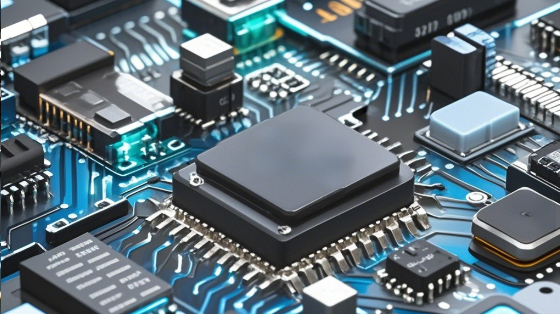The Booming Electronic Components Industry: Driving Technological Advancements
2024/10/25 10:38:30
In today's digital age, the electronic components industry is a crucial pillar of technological progress. It serves as the foundation for a wide range of applications, from consumer electronics to industrial automation, telecommunications, and aerospace. This dynamic industry is constantly evolving, driven by innovation, increasing demand, and the pursuit of higher performance and efficiency.
The electronic components industry encompasses a vast array of products, including semiconductors, resistors, capacitors, inductors, diodes, transistors, integrated circuits, and connectors. These components are essential for the functioning of electronic devices, as they perform various functions such as signal processing, power amplification, data storage, and communication.

One of the key drivers of the electronic components industry is the rapid growth of the consumer electronics market. Smartphones, tablets, laptops, and other portable devices have become ubiquitous, and their demand for advanced electronic components is constantly on the rise. The development of new technologies such as 5G communication, artificial intelligence, virtual reality, and augmented reality is further fueling the demand for high-performance electronic components.
Semiconductors are at the heart of the electronic components industry. They are used in a wide variety of applications, including microprocessors, memory chips, sensors, and power management devices. The semiconductor industry is highly competitive and constantly evolving, with companies investing heavily in research and development to develop new and improved products. Advancements in semiconductor technology have led to smaller, faster, and more power-efficient devices, enabling the development of thinner and lighter electronic products.
In addition to consumer electronics, the electronic components industry also plays a vital role in industrial automation and the Internet of Things (IoT). Industrial sensors, controllers, and communication modules are essential for monitoring and controlling industrial processes, improving productivity, and reducing costs. The IoT is expected to connect billions of devices, creating a huge demand for low-power, cost-effective electronic components.
The telecommunications industry is another major driver of the electronic components industry. The deployment of 5G networks requires advanced electronic components such as high-frequency antennas, power amplifiers, and signal processing chips. 5G technology promises to deliver faster data speeds, lower latency, and greater connectivity, enabling a wide range of new applications such as autonomous vehicles, smart cities, and remote healthcare.
The aerospace and defense industry also relies heavily on electronic components for avionics, navigation systems, communication equipment, and military applications. These components must meet stringent reliability and performance requirements, as they operate in harsh environments and are critical for the safety and success of aerospace and defense missions.
The electronic components industry is highly globalized, with companies operating in different regions of the world. Asia, particularly China, Taiwan, South Korea, and Japan, is a major manufacturing hub for electronic components. These countries have a strong electronics manufacturing ecosystem, including semiconductor foundries, component manufacturers, and assembly plants. Europe and the United States also have a significant presence in the electronic components industry, with companies focusing on high-value-added products such as advanced semiconductors and specialized components.
Despite its growth and importance, the electronic components industry faces several challenges. One of the major challenges is the shortage of semiconductor chips, which has disrupted the global supply chain and affected various industries. The shortage is due to a combination of factors, including increased demand for consumer electronics, supply chain disruptions caused by the COVID-19 pandemic, and geopolitical tensions. Another challenge is the increasing competition from emerging economies and the need to continuously innovate and improve product performance to stay ahead in the market.
To address these challenges, the electronic components industry is taking several measures. Companies are investing in new manufacturing technologies, expanding production capacity, and strengthening supply chain management. They are also collaborating with research institutions and universities to develop new materials and technologies, and exploring new applications and markets.
In conclusion, the electronic components industry is a key driver of technological progress and economic growth. It is constantly evolving, driven by innovation, increasing demand, and the pursuit of higher performance and efficiency. Despite facing challenges, the industry is resilient and is expected to continue to grow in the coming years, driven by emerging technologies and applications. As the world becomes more digital and connected, the importance of electronic components will only continue to increase, making this industry a crucial area of focus for businesses and policymakers alike.
Related Information

- 2025.03.14 Who Are Intel's Main Competitors?

- 2025.03.13 recent chip - related news 2025


